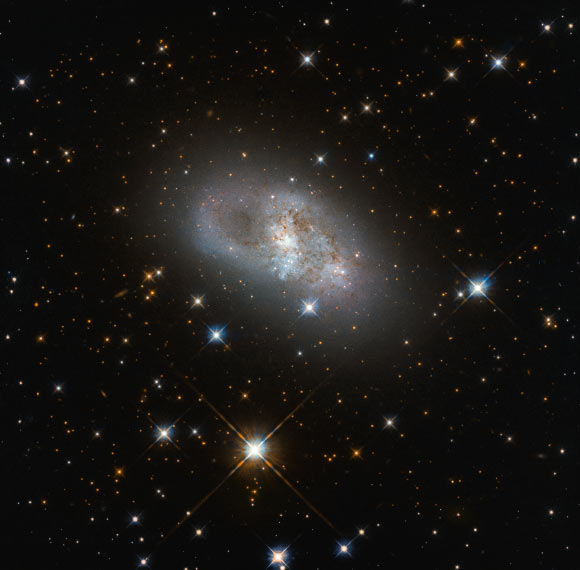Hubble Observes Dwarf Spiral: IC 4653 | Astronomy – Sci-News.com
The NASA/ESA Hubble Space Telescope has taken a beautiful picture of the dwarf spiral galaxy IC 4653.

This image snapped by the Hubble Space Telescope shows a galaxy called IC 4653. This color composite was made from separate exposures taken in the visible and infrared regions of the spectrum with Hubble’s Wide Field Camera 3 (WFC3). Two filters were used to sample various wavelengths. The color results from assigning different hues to each monochromatic image associated with an individual filter. Image credit: NASA / ESA / Hubble / D. Rosario, CEA, Durham University.
IC 4653 is located approximately 80 million light-years away from Earth.
Also known as LEDA 60311 or ESO 138-28, the galaxy resides in the constellation Ara.
IC 4653 was first discovered in July 1901 by the American astronomer DeLisle Stewart.
It has an apparent magnitude of about 12 and is classified as a dwarf spiral galaxy.
“IC 4653’s whirling arms tells us a story about what’s happening inside it,” the Hubble astronomers said.
“Stars are generally brighter and bluer when they are younger, so the blue patches mark sites of new star formation.”
“Studying the structures of other galaxies is a key way to learn about the structure of our own, given that humans can’t leave the Milky Way to look back and see what it looks like from the outside,” they explained.
“It helps to compare our observations of the Milky Way Galaxy with those of nearby galaxies we can see in their entirety.”






